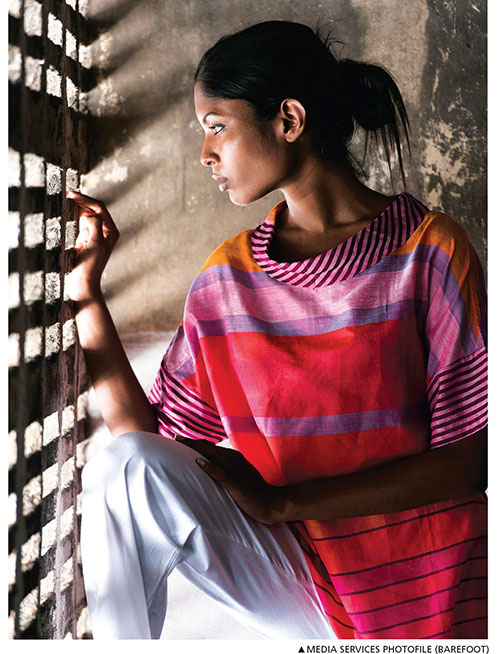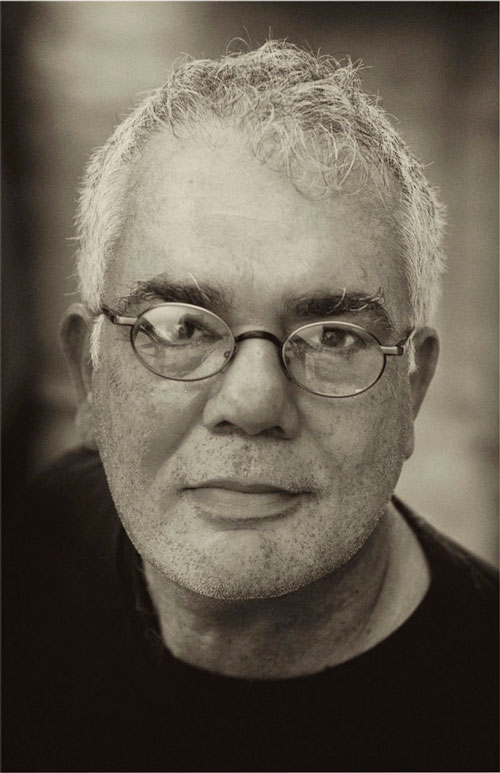HANDLOOM SRI LANKA’S PRIDE
Dominic Sansoni believes the local handloom trade can conquer global markets

Steeped in heritage and artistry, Sri Lanka’s handloom sector is a treasure trove of culture, creativity and craftsmanship. According to available data, in 2020 approximately 962 manufacturers employed over 15,000 artisans across its vibrant landscape, weaving not just threads but the story of a nation.
These products are celebrated for their exceptional quality, intricate designs and sustainable production; and they’re beginning to carve a unique niche in the world market. Yet, beneath the bright hues of the fabrics lie a tapestry of challenges that the sector must overcome to reach its full potential.
Handloom weaving in Sri Lanka is far more than a craft; it is a poetic expression of the nation’s rich traditions. The clack of wooden looms echoes through village workshops, where generations of artisans weave life into cotton and silk.
Each piece tells a story of communities, colours and culture. Whether it is the signature woven geometric patterns by a Dumbara weaver or the soft pastel tones reminiscent of sunlit beaches, these fabrics reflect the island’s natural beauty and creative spirit.
“Design and innovation are key to our success,” says Dominic Sansoni, who helms a design store founded by the late Barbara Sansoni, the celebrated artist, writer and designer.
He continues: “We pride ourselves on producing what is aesthetically unique but also crafted with sustainability and quality. Barefoot is about the art of design and the craft of weaving.”
This blend of tradition and modernity has enabled the handloom store to remain relevant in an ever evolving global marketplace.

At the time of this interview, the M+ Museum in Hong Kong was displaying a small collection of works by Barbara Sansoni in a group exhibition titled Making It Matters.
However, the sector’s journey is far from seamless…
One of the main hurdles is the emergence of imitation designs. “We’re tired of being copied,” Sansoni says, pointedly. “Our design team works tirelessly to innovate but others produce imitations without vision or authenticity.”
Adding to these challenges is the lack of robust support structures. Unlike Sri Lanka’s larger apparel industry, which enjoys government backing, the handloom sector is often overlooked.
“Years ago, the government provided yarn through a centrally managed depot, ensuring that high quality raw materials are available to local manufacturers,” he recalls, adding: “Now we have to source everything independently.”
Yet, amid these challenges, the handloom sector continues to shine as a beacon of sustainability. Barefoot adheres to stringent environmental standards when conducting its dyeing process. This commitment to eco friendliness resonates with a growing global demand for ethical products.
However, managing waste remains a significant hurdle. The dyeing process generates sludge; and despite being certified as non-harmful, it is classified as hazardous by the government. This creates regulatory obstacles for its disposal or repurposing.
Despite these setbacks, the sector is turning to innovation to find solutions.
“We’re collaborating with young innovators to minimise waste and work towards zero waste production. With more government incentives or funding, we could scale these efforts and lead the way in sustainable textiles,” Sansoni explains.
At the heart of this sector are the artisans – the custodians of Sri Lanka’s handloom legacy. However, attracting the next generation to this craft is a pressing challenge. Revitalising the sector requires not only preserving its heritage but making it aspirational for the youth.
He adds: “The average age of our weavers is rising. While we’ve managed to recruit some younger people, the returns must be adequate for them to view this as a viable career.”
The global appetite for handloom textiles is growing, driven by a preference for sustainable, handmade and artisanal products. Consumers are increasingly drawn to the unique textures, vibrant patterns and cultural narratives embedded in handwoven textiles.

Sri Lanka is well positioned to cater to this demand but small and medium-size enterprises (SMEs) need better access to resources, enhanced protection for their designs and incentives for innovation. These measures could transform the handloom sector into a key export driver and enable it to contribute to the country’s economic growth.
Cultural heritage is Sri Lanka’s strength, and the handloom sector embodies this in every warp and weft. Each fabric carries the essence of a community, blending ancient techniques with contemporary aesthetics.
“We’re dealing with human beings, not machines,” says Sansoni, adding that “every piece we produce is infused with love, dedication and a deep respect for tradition and the people we work with.”
By empowering the sector with the right resources and support, Sri Lanka can create an enduring legacy that celebrates its culture globally. With strategic investments and policies, the country’s handloom sector has the potential to lead a global shift towards ethical and sustainable fashion.
As the world leans towards conscious consumerism, SriLanka stands poised to weave its handloom heritage into the fabric of global markets. By cherishing its artisans, embracing innovation and fostering sustainability, the nation can ensure that its handwoven dreams become a lasting reality.
